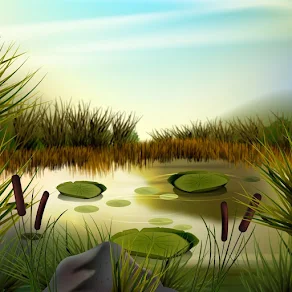Taking action on climate change is a global challenge. While discussions often focus on reducing carbon emissions from human activities, there's a silent hero in the battle against climate change —plants. These green guardians play a crucial role in mitigating climate change, acting as nature's own carbon warriors. In this blog, we'll explore the various ways in which plants contribute to climate change mitigation and why preserving plant life is essential for a sustainable future.
1. Carbon Sequestration:
Plants are expert carbon capturers. Through the process of photosynthesis, they absorb carbon dioxide from the atmosphere, converting it into oxygen and storing carbon in their biomass. Forests, in particular, act as vast carbon sinks, helping to offset the carbon emissions produced by human activities.
2. Forests as Carbon Storehouses:
Dive into the significance of forests as carbon storehouses. Explore how the world's forests, from the Amazon rainforest to the boreal forests, play a critical role in sequestering carbon and discuss the threats they face due to deforestation.
3. Afforestation and Reforestation Initiatives:
Highlight the importance of afforestation (planting trees in areas that were not previously forested) and reforestation (replanting trees in deforested areas) initiatives. Showcase successful projects around the world and their positive impact on local ecosystems and global carbon levels.
4. Planting for the Planet: Individual and Community Contributions:
Empower readers by discussing how individuals and communities can contribute to climate change mitigation through tree planting initiatives. Provide practical tips for starting local tree-planting campaigns and highlight success stories of communities making a difference.
5. Agricultural Practices for Carbon Farming:
Explore sustainable agricultural practices that enhance carbon sequestration in soils. Discuss the benefits of cover cropping, agroforestry, and other methods that not only capture carbon but also promote soil health and biodiversity.
6. Role of Seagrasses and Wetlands:
Shed light on the often-overlooked role of seagrasses and wetlands in carbon sequestration. Discuss how these ecosystems trap and store carbon, emphasizing their importance in coastal regions and their vulnerability to climate change.
7. Plants as Climate-Resilient Species:
Examine how certain plant species demonstrate resilience to climate change. Discuss their adaptive mechanisms, such as drought resistance or tolerance to higher temperatures, and the potential role of these species in reforestation and ecosystem restoration efforts.
Conclusion:
As we navigate the complex challenges of climate change, it's crucial to recognize and appreciate the indispensable role that plants play in mitigating its impacts. From the vast canopies of forests to the delicate seagrasses in our oceans, every plant contributes to the collective effort of creating a sustainable and resilient planet. Preserving and restoring plant ecosystems must be at the forefront of our strategies for a healthier, greener, and more climate-resilient future.
To know more visit: MSc Botany - Botany Department St.Teresa's College Ernakulam



Comments
Post a Comment